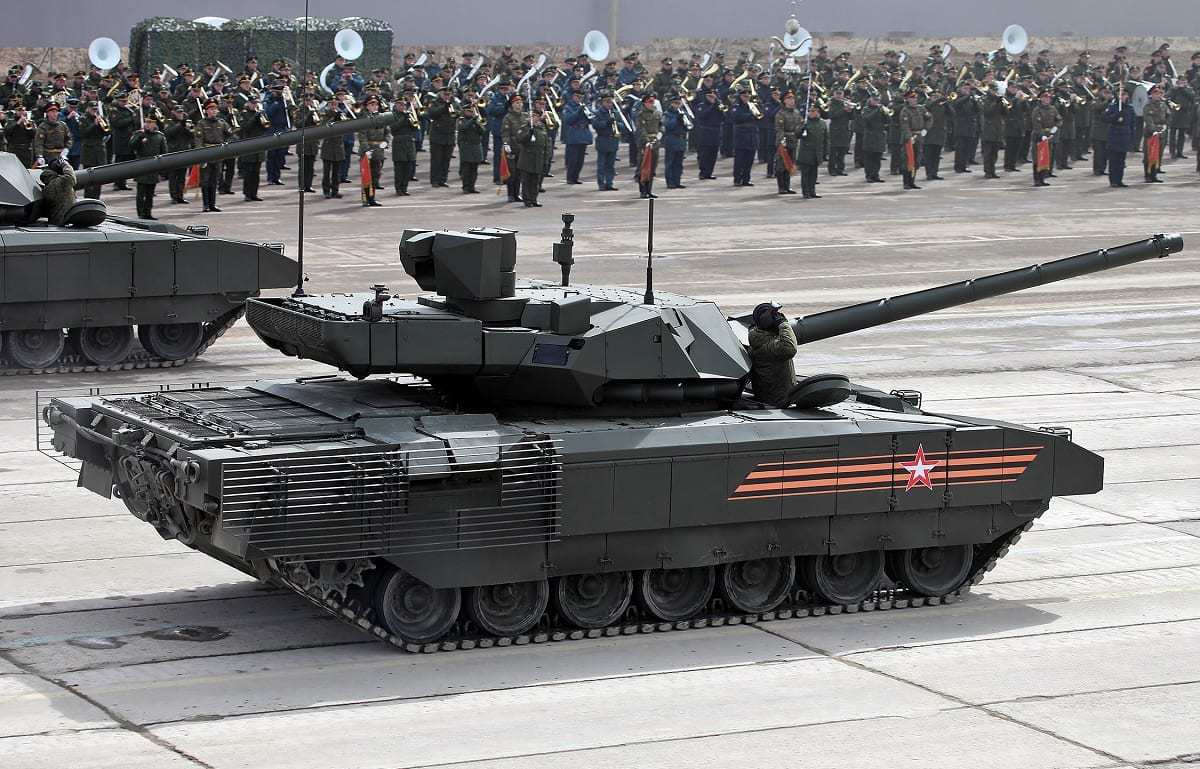Russia’s long-awaited T-14 Armata tank has been a disappointment in many respects. After several years in development and plenty of hype, Russia now seems to be tempering expectations. In fact, Russia may not even use the T-14 for themselves, instead just exporting what was once billed as a revolutionary weapons platform.
The T-14 is years behind schedule and has barely been in combat, aside from a brief foray in Syria. In 2020, “the country’s first class of fourth generation battle tank, the T-14 Armata, has been deployed to Syria for testing,” Military Watch Magazine reported. “Testing the platform in a low intensity war zone could help to demonstrate that the T-14 is indeed combat ready despite having only entered service in limited numbers.”
In the report, Russian Minister of Industry and Trade Denis Manturov confirmed that the T-14s had made their combat debut. “Yes, that’s right. They were used in Syria,” Manturov said. “They were used in field conditions in Syria, so we took into account all the nuances.”
Syria was an ideal testing ground for the new military technology. “Low intensity combat in Syria, where the risk of weapons systems being captured remains low but many major military powers such as the United States and Turkey continue to deploy military forces, provides an ideal testing ground for the weapons system,” MWM reported.
As for the Russo-Ukraine War, in which Russian tanks are struggling to advance against guerilla style Ukrainian defenders, touting simple, hand-held anti-tank weapons, the T-14 has been absent.
“The much-hyped, but still not proven, T-14 Armata main battle tanks, aren’t yet ready for frontline combat and are in very short supply,” The Drive reported. “This is mainly due to the financial realities of producing a brand new tank and the development it takes to make it actually work as promised.”
The T-14 was an advanced tank – and developing advanced (novel) weapons platforms often involves some trial and error. And the T-14 is loaded with updated features.
“Experts were shocked by the new design and concept of the Armata, a high-tech vehicle that features an active protection system to shoot down anti-tank rockets, sophisticated sensors and data networking, onboard drones, and a high degree of automation,” Business Insider reported.
For a power plant, the T-14 relies on the ChTZ 12N360 diesel engine, which offers up to 1,500 horsepower – although can offer up to 2,000 horsepower (which would reduce the engine’s service life significantly). The tank has an operational range of over 500 kilometers. With a 12-speed automatic gearbox, the T-14 can hit top speeds exceeding 50 miles per hour. The tank is outfitted with seven 700mm road wheels per side – a design difference from preceding T-90/80/72/64 tanks. The change may have been for the purpose of improving the tank’s pivoting ability.
The T-14 uses an internal armored capsule to protect the crew. The tank’s chassis and turret are outfitted with dual-explosive reactive armor (ERA). And the tank uses an integrated, computerized control system that can monitor all of the tank’s different systems. The T-14 also relies on the Afghanit active protection system (APS) that uses a millimeter-wave radar to detect, track, and intercept munitions fired at the T-14. Efforts were also taken to reduce the T-14s radar signature, like a radar-absorbing paint job and the concealment of heat signature emitting components deep inside the tank’s hull.
Now, however, Russia seems to be wavering on their new tank; they may instead use the tank primarily as an export rather than as a staple of their own military forces. “Perhaps Russia itself had doubts,” Business Insider reported. “Moscow initially announced plans to buy 2,300 Armatas by 2025, at an estimated $4 million apiece. By 2020, that number had been pared to 132, as the Russian army opted to modernize its existing tanks.” The question now is whether other countries will want the beleaguered T-14.
Harrison Kass is the Senior Defense Editor at 19FortyFive. An attorney, pilot, guitarist, and minor pro hockey player, he joined the US Air Force as a Pilot Trainee but was medically discharged. Harrison holds a BA from Lake Forest College, a JD from the University of Oregon, and an MA from New York University. He lives in Oregon and listens to Dokken. Follow him on Twitter @harrison_kass.

